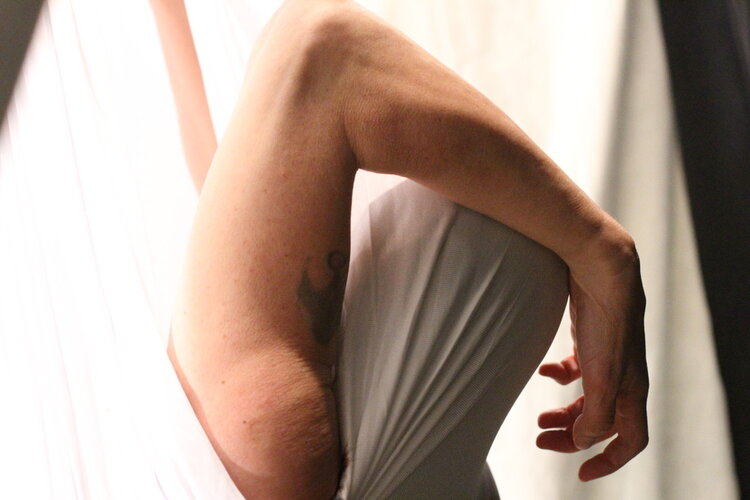I am a mid-career painter and performance artist. In 1993 I was accepted into an Aboriginal community in remote Arnhem Land, Australia, my painting and performance art are primarily the exploration of the forces of nature and of human effects interacting with nature.
BIG WOOD enamel on wood 2001
La Bomb - performance 2003
My lifetime of art making since 1987 has become progressively green, my performance art has always been (since 1993) eco-feminist. The act of making art connects the artist to the “zone”. Bringing images and imagined worlds into being, we mirror the earth in the act of creation and destruction. We are in essence the earth. It is time we as artists get back to our cauldrons!
TBG, my storefront studio/gallery is also a natural art material laboratory. I make paper to paint on & grow plants in the garden behind my studio that contribute to make fully natural dyes. I also grind pigments and earth ochres from rocks, soil and ash and make brushes from my own hair.
Are artists at the forefront of making social change? You can not be on the cutting edge if you are dependent on art store franchises and environmentally hazardous art materials like oil and acrylic paint and all the solvents and packaging that go with them.
How can creative freedom be environmentally brutal? There is a massive disconnect from the planet and the artist. Historically it is the connectivity with earth that gives an artwork power and an artist inspiration. Artists are not exempt from healing the planet.
I refuse to join the treadmill of normalized global destruction while living a life exploring and understanding creative freedom.
YELLOW ON BLACK oil on canvas 1997
I began as an oil painter, spent years using enamel and spray paint and after 5 years of mainly using ink and water I began to see the light. I began using trashed wood fragments to paint on in 2001, my hair as a brush in 2008, earth as pigment in 2011 and single use plastic bags for mark making in 2019.
The idea that archival art materials are of utmost importance, hinges on the fact that to make art history, be seen as serious player your work must not (or at least very slowly) bio-degrade. I want to turn that idea on its head. Decay is magnificent, an occurrence for artists to work with not fight against. Separation from the natural world and denial of decomposition cuts us off from “the indigenous experience”, true authorship and experience of a work of art.
Just as food, flowers and herbs can be medicinal and transformative, so can pigments, grounds and surfaces.
SPARROW HEART - green ink on paper 20x30” 2013
Collection of REATA
Uluru study , ink & earth on paper, 2017 - Collection of Jenny Forster
To have a natural science lab, making art materials integrated into the artistic practice is my goal.
I am open to soil scientists, gardeners or craft practitioners who feel they can contribute.
I have a 501c3 not for profit status. “THE THERESA BYRNES PROJECTS”





